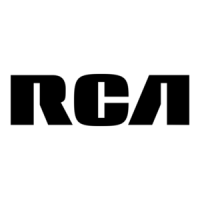CHANNEL
SERVICING
(Cont'd)
Servicing a Data Transfer
Block 1
Block 2
Block
3
Input/Output Operation
nique insures
that
the
interference to selector channel servicing caused
by
the
multiplexor channel is
not
greater
than
that
of
an
additional selector
channel.
• Once
an
input/output
operation
has
been initiated,
it
proceeds
under
control
of
the
appropriate
channel
and
registers
in scratch-pad memory
and
non-addressable main memory (multiplexor devices). When
an
input/
output
operation
has
been initiated
and
the
input/output
device is
ready
to send
or
receive a
data
byte,
it
asks
the
processor
for
a service request.
When
the
processor honors
this
service request, servicing
of
a
data
trans-
fer
occurs.
Because servicing a
data
transfer
requires
that
the
channel utilize
main
memory, scratch-pad memory
and
non-addressable
main
memory
(multiplexor devices), normal mode processing is held off until
the
servic-
ing
has
been completed. Servicing
of
a
data
transfer
is time-shared
with
normal mode processing. Between service requests, processing is resumed,
or
another
channel is
permitted
to service its device
(s
) .
If
a
burst
mode operation
has
been initiated to
the
multiplexor chan-
nel,
the
channd
operates similar to a selector
and
only one device is serv-
iced. Service requests
by
devices
other
than
the
one
operating
in
burst
mode
are
ignored until
the
multiplexor channel is
operating
in
the
multi-
plexor mode. This occurs
at
the
conclusion of
the
burst
operation when
the
last
data
byte
has
been serviced
(prior
to
interrupt).
Servicing
of
a
data
transfer
causes
the
following events
to
occur (see
figure
9).
•
If
the
service request comes
from
a device control electronics con-
nected to
the
mUltiplexor channel which is
operating
in
the
multiplex mode,
the
processor gets
the
device address and fetches the
appropriate
sub-
channel
registers
in non-addressable
main
memory. These
registers
are
placed
in
processor utility registers
in
scratch-pad memory. (They
are
not
sent
to
the
multiplexor channel
registers
in scratch-pad memory.)
If
the
service request comes
from
a device control electronics connected to
the
mUltiplexor channel which is
operating
in
the
burst
mode
or
from
a device
connected to a selector channel, the
appropriate
channel
registers
in
scratch-pad memory
are
used to service
the
data
transfer.
• A
test
is made to. see
if
the
Program
Controlled
Interrupt
(PCI)
flag
is set.
If
it
is,
the
channel
interrupt
bit
is
set
in
the
Interrupt
Flag
register
and
an
interrupt
occurs,
if
permitted. The
PCI
flag is
reset
and
the
program
control
interrupt
bit
is
set
in
the
channel
status
byte.
• A
test
is made to see
if
the
device control electronics requesting service
has
indicated
an
end condition.
An
end condition is indicated
when
one
of
the
following occurs:
1. The processor reaches a
byte
count lapse.
If
this
occurs,
the
processor
tells
the
device
control
electronics
to
indicate
an
end
condition
on
the
next
data
service request.
67

